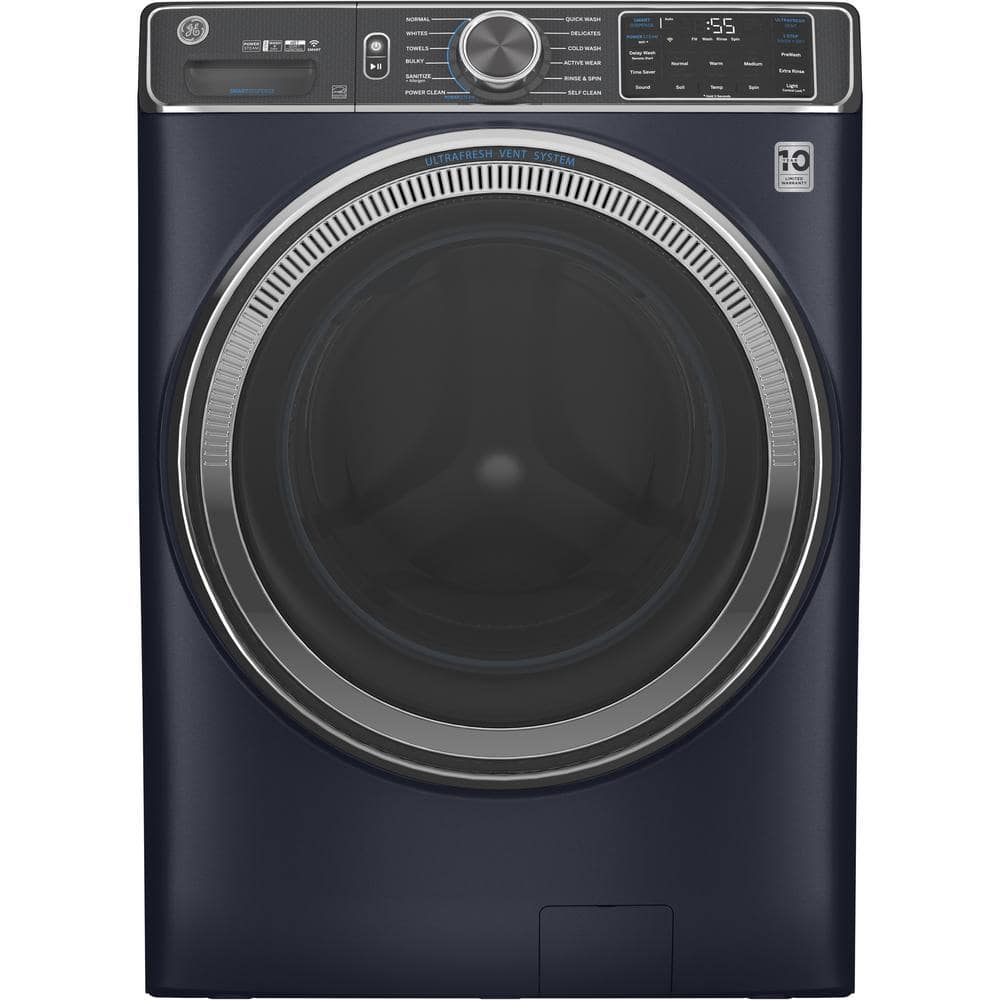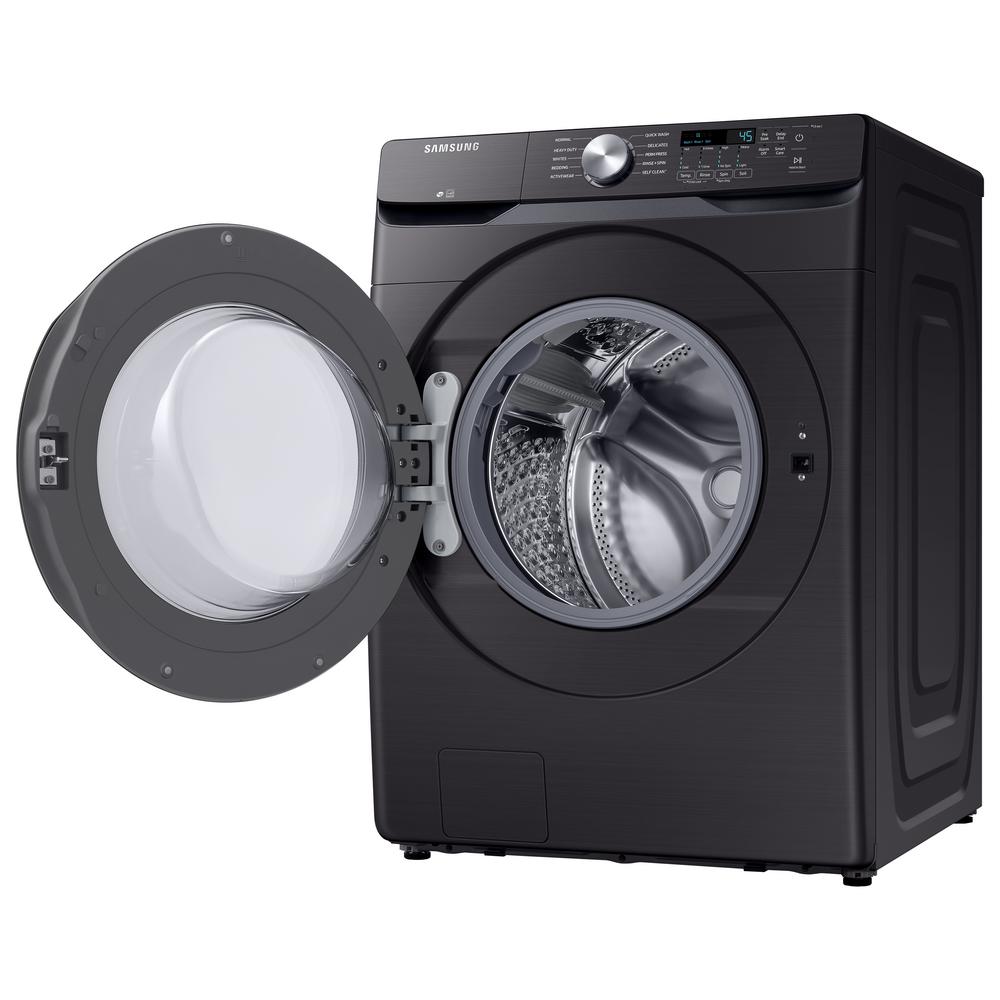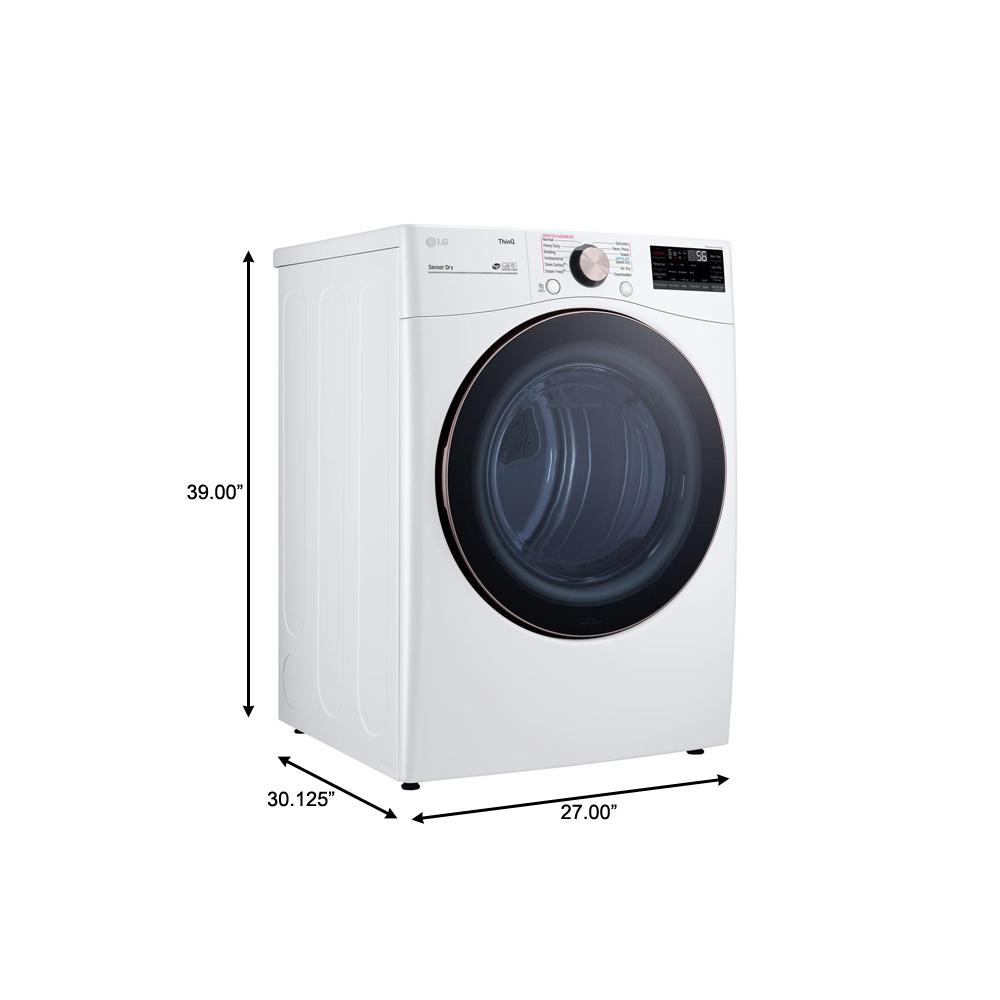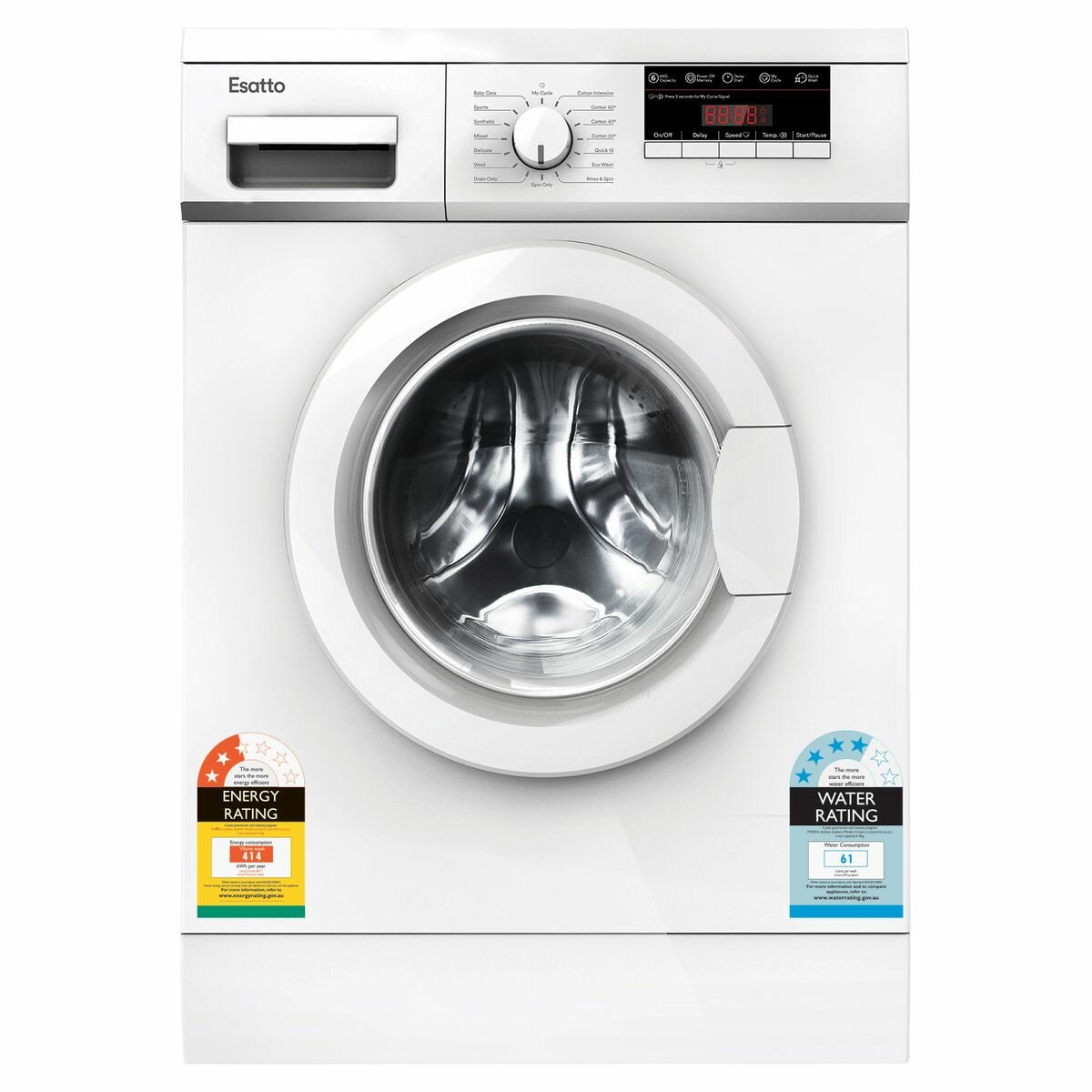GE 5.0 cu. ft. Smart Sapphire Blue Front Load Washer with OdorBlock UltraFresh Vent System with Sanitize and Allergen
Microban Technology built-in to prevent bacteria growth. SmartDispense stores and automatically dispenses detergent. 1 Step Wash + Dry eliminates need to transfer clothes to dryer.
At GE Appliances, we bring good things to life, by designing and building the world’s best appliances. Our goal is to help people improve their lives at home by providing quality appliances that were made for real life. Whether it’s enjoying the tradition of making meals from scratch or tackling a mountain of muddy jeans and soccer jerseys, GE Appliances are crafted to support any and every task in the home.
- UltraFresh vent system with OdorBlock – the first and only UltraFresh Vent System with OdorBlock eliminates excess moisture to help prevent odors ensuring your washer stays fresh and clean
- Microban antimicrobial technology – Built into components including the gasket, dispenser and draining system delivering protection that lives on load after load
- SmartDispense Technology – Save time and make laundry effortless with an intelligent dispenser that holds up to 32 loads of detergent and automatically dispenses the right amount each time
- 1 Step Wash + Dry – Wash and dry a small load in your washer, eliminating the need to transfer clothes to the dryer
- Sanitize + Allergen – Industry-first cycle sanitizes fabrics to kill 99% of common bacteria and allergens such as dust mites
- Built-in WiFi – Start, stop and monitor your laundry from anywhere while receiving real-time notifications and updates
- Dynamic Balancing Technology (dBT) – Our patented, time saving technology senses and rebalances uneven loads during the spin cycle, providing a quiet wash
- Reversible Door – Easily reverse your washer and dryer door for superior installation flexibility
- PowerSteam – Safely penetrates deep into fabric fibers, loosening stains to deliver enhanced cleaning performance
- Sanitize Cycle – Sterilize clothing with elevated temperatures designed to kill common household bacteria
- ENERGY STAR qualified – Meets or exceeds federal guidelines for energy efficiency for year-round energy and money savings
- Approx. Dimensions (in.) – 39 3/4 H x 28 W x 34 D
- Limited 1-year entire appliance warranty
- Energy Star
Additional information
| Capacity - Washer (cu. ft.) | 5 |
|---|---|
| Depth With Door Open 90 Degrees (In) | 56.5 |
| Door Opening Height x Width (In.) | 15.25 x 22.5 |
| Product Depth x Height x Width (in.) | 34 x 39.75 x 28 |
| Certifications and Listings | ADA Compliant,Energy Star,UL Listed |
| Manufacturer Warranty | Limited 1-year entire appliance |
0 (zero) is a number representing an empty quantity. Adding 0 to any number leaves that number unchanged. In mathematical terminology, 0 is the additive identity of the integers, rational numbers, real numbers, and complex numbers, as well as other algebraic structures. Multiplying any number by 0 has the result 0, and consequently, division by zero has no meaning in arithmetic.
As a numerical digit, 0 plays a crucial role in decimal notation: it indicates that the power of ten corresponding to the place containing a 0 does not contribute to the total. For example, "205" in decimal means two hundreds, no tens, and five ones. The same principle applies in place-value notations that uses a base other than ten, such as binary and hexadecimal. The modern use of 0 in this manner derives from Indian mathematics that was transmitted to Europe via medieval Islamic mathematicians and popularized by Fibonacci. It was independently used by the Maya.
Common names for the number 0 in English include zero, nought, naught (), and nil. In contexts where at least one adjacent digit distinguishes it from the letter O, the number is sometimes pronounced as oh or o (). Informal or slang terms for 0 include zilch and zip. Historically, ought, aught (), and cipher have also been used.
5 (five) is a number, numeral and digit. It is the natural number, and cardinal number, following 4 and preceding 6, and is a prime number. It has garnered attention throughout history in part because distal extremities in humans typically contain five digits.
Five is the third-smallest prime number, and the second super-prime, since its prime index is prime. Notably, 5 is equal to the sum of the only consecutive primes 2 + 3 and it is the only number that is part of more than one pair of twin primes, (3, 5) and (5, 7), also making it the first balanced prime with equal-sized prime gaps above and below it (of 2). 5 is the first safe prime where for a prime is also prime (2), and the first good prime, since it is the first prime number whose square (25) is greater than the product of any two primes at the same number of positions before and after it in the sequence of primes (i.e., 3 × 7 = 21 and 11 × 2 = 22 are less than 25). 11, the fifth prime number, is the next good prime, that also forms the first pair of sexy primes with 5. More significantly, the fifth Heegner number that forms an imaginary quadratic field with unique factorization is also 11 (and the first repunit prime in decimal, a base in-which five is also the first non-trivial 1-automorphic number).
Five is also the second Fermat prime, and the third Mersenne prime exponent, as well as the fourth or fifth Fibonacci number. It is also an Eisenstein prime (like 11) with no imaginary part and real part of the form . It is the first congruent number, as well as the length of the hypotenuse of the smallest integer-sided right triangle, making part of the smallest Pythagorean triple (3, 4, 5). The regular five-sided pentagon is the first regular polygon that does not tile the plane with copies of itself, and it is the largest face that a regular three-dimensional regular Platonic solid can have, as represented in the regular dodecahedron. In general, a conic curve will require five points in the same way that two points are needed to determine a line.
An allergen is a type of antigen that produces an abnormally vigorous immune response in which the immune system fights off a perceived threat that would otherwise be harmless to the body. Such reactions are called allergies.
In technical terms, an allergen is an antigen that is capable of stimulating a type-I hypersensitivity reaction in atopic individuals through immunoglobulin E (IgE) responses. Most humans mount significant Immunoglobulin E responses only as a defense against parasitic infections. However, some individuals may respond to many common environmental antigens. This hereditary predisposition is called atopy. In atopic individuals, non-parasitic antigens stimulate inappropriate IgE production, leading to type I hypersensitivity.
Sensitivities vary widely from one person (or from one animal) to another. A very broad range of substances can be allergens to sensitive individuals.
Blue is one of the three primary colours in the RYB colour model (traditional colour theory), as well as in the RGB (additive) colour model. It lies between violet and cyan on the spectrum of visible light. The term blue generally describes colours perceived by humans observing light with a dominant wavelength that’s between approximately 450 and 495 nanometres. Most blues contain a slight mixture of other colours; azure contains some green, while ultramarine contains some violet. The clear daytime sky and the deep sea appear blue because of an optical effect known as Rayleigh scattering. An optical effect called the Tyndall effect explains blue eyes. Distant objects appear more blue because of another optical effect called aerial perspective.
Blue has been an important colour in art and decoration since ancient times. The semi-precious stone lapis lazuli was used in ancient Egypt for jewellery and ornament and later, in the Renaissance, to make the pigment ultramarine, the most expensive of all pigments. In the eighth century Chinese artists used cobalt blue to colour fine blue and white porcelain. In the Middle Ages, European artists used it in the windows of cathedrals. Europeans wore clothing coloured with the vegetable dye woad until it was replaced by the finer indigo from America. In the 19th century, synthetic blue dyes and pigments gradually replaced organic dyes and mineral pigments. Dark blue became a common colour for military uniforms and later, in the late 20th century, for business suits. Because blue has commonly been associated with harmony, it was chosen as the colour of the flags of the United Nations and the European Union.
In the United States and Europe, blue is the colour that both men and women are most likely to choose as their favourite, with at least one recent survey showing the same across several other countries, including China, Malaysia, and Indonesia. Past surveys in the US and Europe have found that blue is the colour most commonly associated with harmony, confidence, masculinity, knowledge, intelligence, calm, distance, infinity, the imagination, cold, and sadness.
Sapphire is a precious gemstone, a variety of the mineral corundum, consisting of aluminium oxide (α-Al2O3) with trace amounts of elements such as iron, titanium, cobalt, lead, chromium, vanadium, magnesium, boron, and silicon. The name sapphire is derived from the Latin word sapphirus, itself from the Greek word sappheiros (σάπφειρος), which referred to lapis lazuli. It is typically blue, but natural "fancy" sapphires also occur in yellow, purple, orange, and green colors; "parti sapphires" show two or more colors. Red corundum stones also occur, but are called rubies rather than sapphires. Pink-colored corundum may be classified either as ruby or sapphire depending on locale. Commonly, natural sapphires are cut and polished into gemstones and worn in jewelry. They also may be created synthetically in laboratories for industrial or decorative purposes in large crystal boules. Because of the remarkable hardness of sapphires – 9 on the Mohs scale (the third hardest mineral, after diamond at 10 and moissanite at 9.5) – sapphires are also used in some non-ornamental applications, such as infrared optical components, high-durability windows, wristwatch crystals and movement bearings, and very thin electronic wafers, which are used as the insulating substrates of special-purpose solid-state electronics such as integrated circuits and GaN-based blue LEDs. Sapphire is the birthstone for September and the gem of the 45th anniversary. A sapphire jubilee occurs after 65 years.
A system is a group of interacting or interrelated elements that act according to a set of rules to form a unified whole. A system, surrounded and influenced by its environment, is described by its boundaries, structure and purpose and is expressed in its functioning. Systems are the subjects of study of systems theory and other systems sciences.
Systems have several common properties and characteristics, including structure, function(s), behavior and interconnectivity.
Washer most commonly refers to:
- Washer (hardware), a thin usually disc-shaped plate with a hole in the middle typically used with a bolt or nut
- Washing machine, for cleaning clothes
Washer may also refer to:
- Dishwasher, a machine for cleaning dishware, cookware and cutlery
- Dishwasher (occupation), a person who cleans dishware, cookware and cutlery
- Washer, a person with obsessive-compulsive disorder who washes her/his hands compulsively
- Washer method, a mathematical formula for finding volume
- Washer pitching, an outdoor game involving tossing discs at a target
With or WITH may refer to:
- With, a preposition in English
- Carl Johannes With (1877–1923), Danish doctor and arachnologist
- With (character), a character in D. N. Angel
- With (novel), a novel by Donald Harrington
- With (album), a 2014 album by TVXQ
- With (EP), a 2021 EP by Nam Woo-hyun






by Roma
This machine has worked well. I’m still trying to learn how to use all of the features. The only downside so far is that the cycles take longer than my old machine.
by Tuna
Washes wide range of items with ease. Very easy to use, love the no touch detergent feature. Will buy GE again.
by Khall
Cannot say enough great things about this washer, we have always had front loaders and I’ve always thought they clean a lot better than top loaders, but this one blows them all away! And I love the sanitize cycle for towels and dog bedding!
by Steve
This is a great machine. I haven’t used it a lot as I’ve been traveling. Looks good and I’ll know more when I get the matching dryer next week. It’s supposed to talk with the dryer. I’ll see how that goes. I haven’t used close to all the features and may give this 5-stars after I do. These reviews are handed out too early after installation.
by Dave
Runs smoothly very quiet well balances loads has Awesome features even wifi , very advanced as GE has been a leader for years.
by Jimmy
We really like our new washer thus far. It’s easy to use and seems to be doing a good job getting the clothes clean. It is also very attractive set.
by Kathy
This has a bigger capacity than our previous 20 year old front-loader. We love the convenience of the SmartDispense. So glad that the automatic venting process and special dedicated clean cycle eliminate front-loader funky smell.